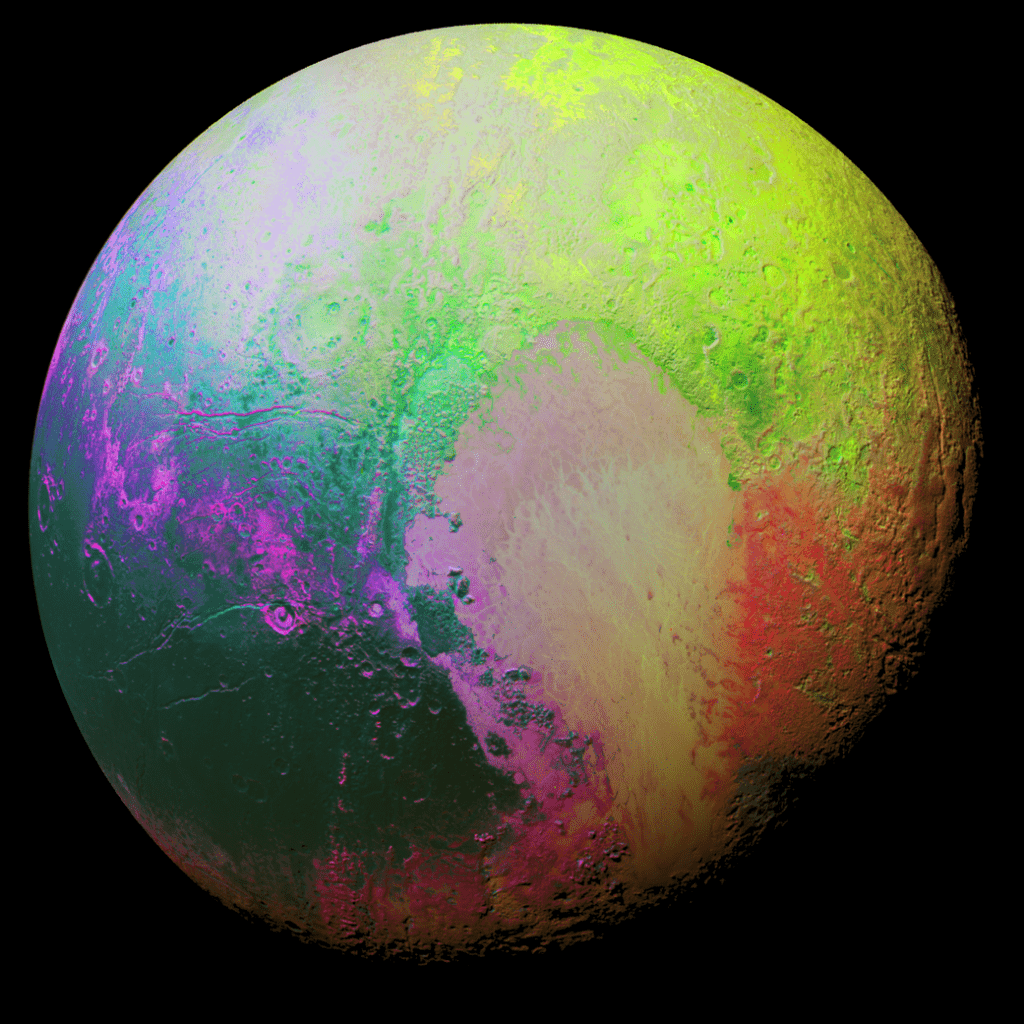NASA released a stunningly colorful new image of the dwarf planet Pluto, the latest in a series of images that steadily trickle down from the New Horizons probe since it left the solar system this July. And it’s not only eye candy either; the features this picture reveals has left the smart guys at the agency scratching their heads.
One of the most interesting features is the large, heart-shaped lobe on the western side of Pluto, named the Sputnik Planum. What’s striking about it is, ironically, what doesn’t seem to be striking it — there are no craters here. Researchers were left scratching their heads at this huge but crater-free plain; a lot of meteors hit the dwarf planet and have been doing so since before humans evolved, so why isn’t there any evidence of impact?
The only explanation is that the surface is new — NASA estimates that the Planum is only about 10 million years old. When compared with the humongous 4.5 billion-years estimated age of the solar system, it suggests that you can find the great heat and pressure needed to reshape rocks on such a huge scale on the dwarf, that Pluto is still geologically active.
“It’s a huge finding that small planets can be active on a massive scale, billions of years after their creation,” said New Horizons lead investigator, Alan Stern.
The photo was presented at the Division of Planetary Sciences of the American Astronomical Society meeting in National Harbor, MD on Monday, and the team also presented a number of other findings: information about Pluto’s thin and hazy atmosphere, and the discovery of what they believe to be an ice volcano on the surface.
Still, the lack of craters on Sputnik Planum remains one of the most stunning discoveries about the planet. The surface couldn’t have been exposed to the meteors and asteroids barreling through space for very long, meaning it was “added” quite recently. Other areas of Pluto are much older, some close to the 4 billion years mark.
Stern believes that the dwarf planet has been geologically active for much of it’s life. However, as the planet is so small, any heat it might have retained after its creation would have dissipated into space a long time ago — so the scientists don’t know what could be driving geological processes on Pluto.
But now, at least, they have a good starting point.










